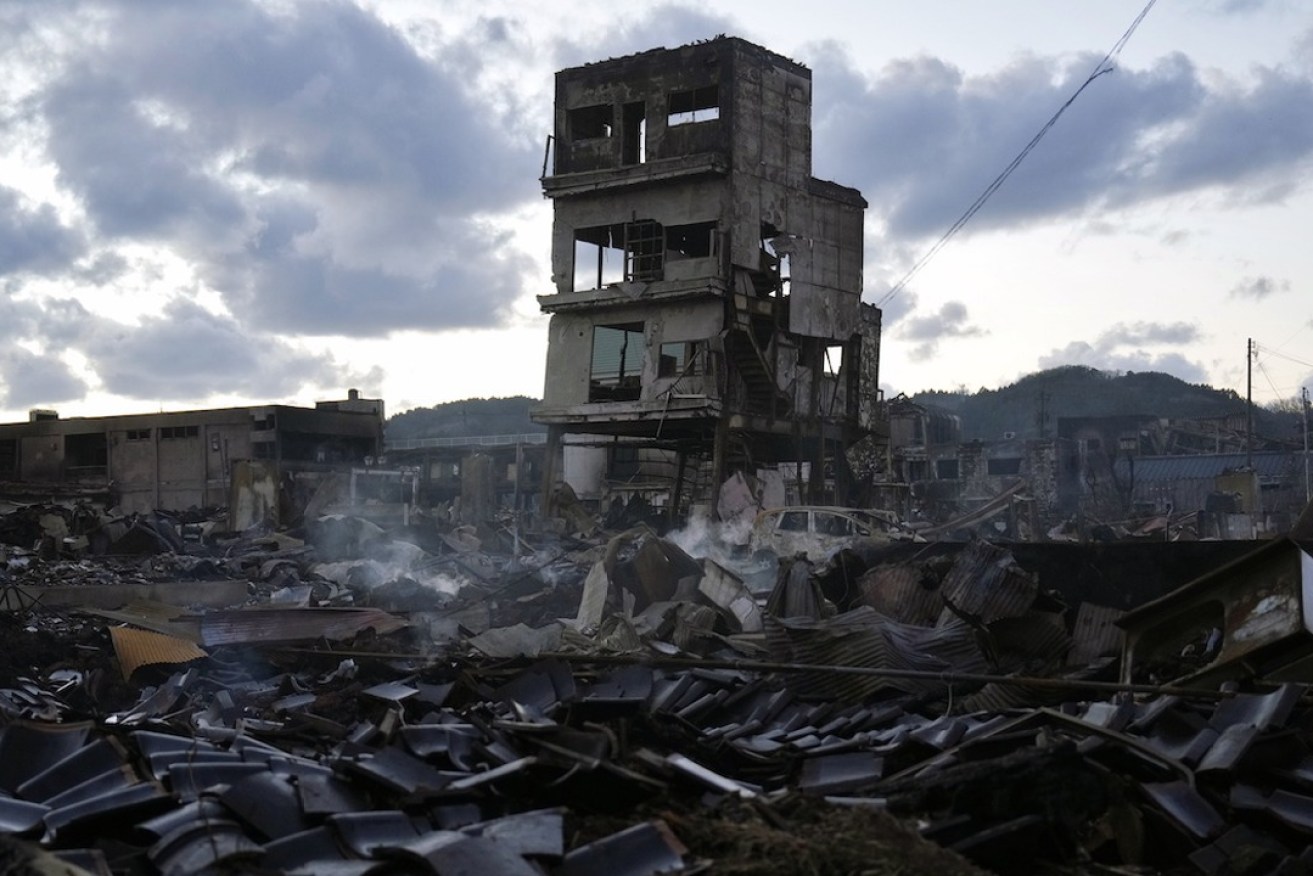Race against time to find Japan earthquake survivors
Rescuers are pressing on in their search for survivors of a New Year’s Day earthquake that killed at least 84 people in Japan.

Earthquake damage in Japan's Ishikawa Prefecture. Photo: Franck Robichon/EPA
“We must continue putting all of our efforts into rescuing people, even beyond 72 hours after the disaster,” Japanese Prime Minister Fumio Kishida said at a press conference on Thursday.
Survival rates drop off 72 hours after an earthquake, according to emergency responders.
So far 156 people have been rescued, but at least 79 others remain unaccounted for, according to authorities.
The extent of the damage from the earthquake and the tsunami it triggered remains unclear, with rescuers struggling to reach the northernmost areas of the peninsula – where much of the fatalities are – due to severed roads.
Three days after disaster struck, 30 villages remain inaccessible, according to Ishikawa prefecture authorities.
Material aid has trickled in but many evacuees remain largely cut off from food, water, electricity, and communications amid freezing temperatures and bad weather, authorities have also said.
The 3000 meals and 5000 bottles of water that have been delivered so far are not enough for the 11,000 evacuees currently seeking aid in Wajima city, its mayor Shigeru Sakaguchi said at a regional disaster response meeting.
“First and foremost, it’s the road – severed roads are hampering not just aid supplies, but also the recovery of electricity, water, mobile signals and other lifeline infrastructures,” he said.
Local mayors have acknowledged some supplies are beginning to arrive but said they are not nearly enough.
Basics such as internet access, medical supplies, and clean toilets are also lacking.
“Compared to other disasters the road situation into Wajima is very bad,” Shunsaku Kohriki, a medical worker, told Reuters in Wajima city.
“I feel it’s taking longer than usual for assistance to arrive.
“I think realistically speaking the evacuees will have to live in really tough conditions for a while yet.”
Kyoko Kinoshita, 62, worried about the possible spread of the flu and COVID-19 as she queued in line with a couple of hundred other survivors for food in Wajima.
“We have no running water,” she said.
“We cannot wash our hands after going to the bathroom.”
The government has pledged to proactively provide supplies instead of waiting for official requests from local authorities and has quintupled the number of Self-Defence Force members tasked with rescue operations since Monday.
Some aid has been delivered via sea instead of land, with some coast guard boats reaching ports in Wajima and Iida on Wednesday.
Larger ships have been unable to dock in the bays of Suzu city because the seabed had buckled from the earthquake, said Masuhiro Izumiya, mayor of Suzu city where some 90 per cent of houses appear to have collapsed.
The water in its ports is now not deep enough for docking big ships, Izumiya said on Wednesday.
– AAP




